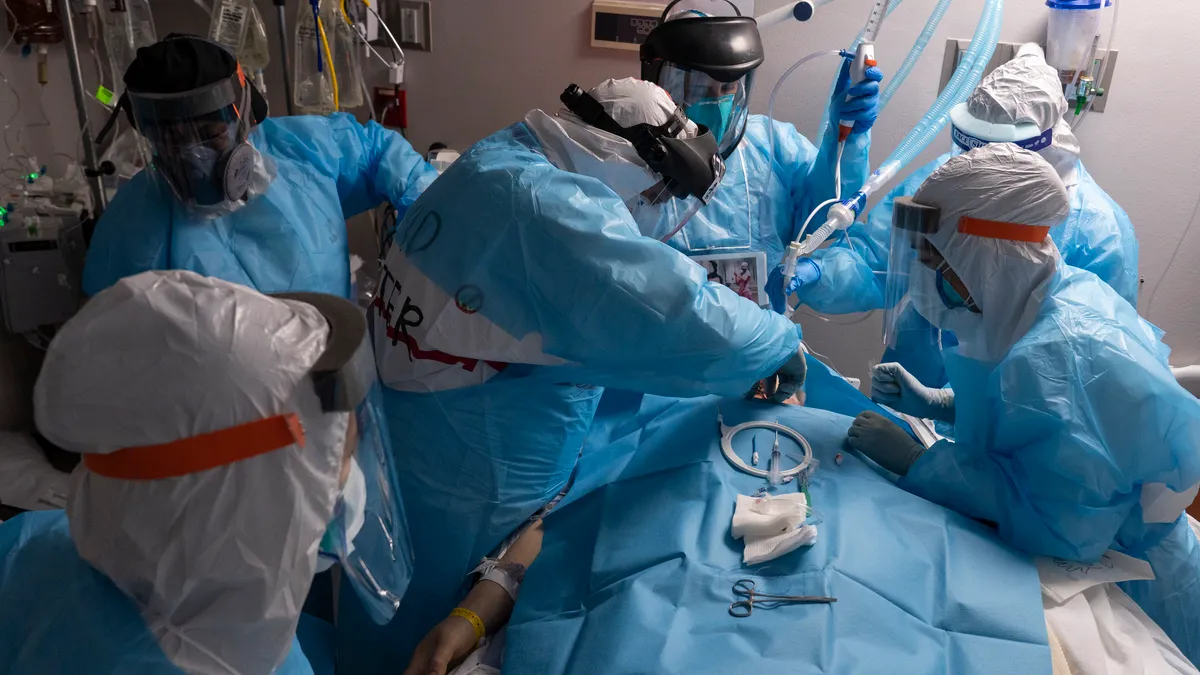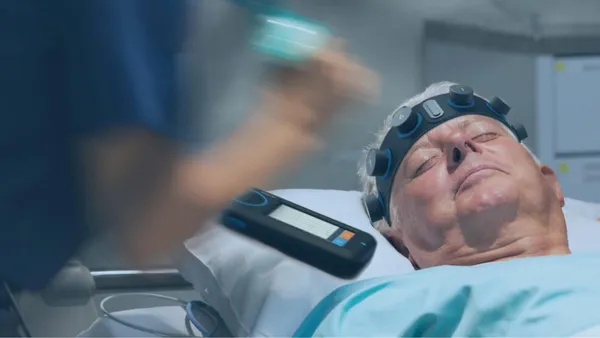Dive Brief:
- Healthcare hiring trends and “generally positive” comments from Baxter and Stryker suggest the pressures on U.S. medtech procedure volumes may be easing, according to analysts at Goldman Sachs.
- The evidence offers support for the analysts’ expectation that U.S. procedures will “modestly” improve next year in both inpatient and outpatient settings.
- Still, the recovery may be uneven: A survey of not-for-profit hospitals found inpatient discharges were worse in October than the previous two months, contrasting with accelerating volumes at public hospitals seen in another analysis.
Dive Insight:
The Goldman Sachs analysts said they went into 2022 expecting U.S. procedure volumes “to remain well below trend” in the first half of the year before beginning to normalize in the months leading up to 2023. While the year followed that broad pattern,“one could argue that 2H will not have improved as much as we suggested,” they said in a note to investors.
Exactly how much volumes increase in the second half of the year will depend on the extent to which hospital staffing improves and how quickly lingering, pandemic-related patient concerns about going to hospitals abate.
Early data of the fourth quarter have generated evidence for optimism. Healthcare employment rose 3.4% year-on-year in November, representing another acceleration versus the prior month. The short string of months of low-double-digit growth in employment could support increased procedure volumes, according to Goldman Sachs.
“We continue to believe supply side staffing constraints remain a major bottleneck for healthcare utilization so these sustained employment gains should enable more volumes over the coming months,” the analysts wrote. The analysts expect hospital staffing to continue to improve “in a mostly linear fashion” throughout next year.
However, the data on whether volumes are actually improving in the fourth quarter are mixed. The Department of Health and Human Services’ data through mid-October suggest accelerating volumes at public hospitals. “Generally positive” comments from leaders at Baxter and Stryker at conferences last week are another encouraging sign, according to the analysts.
Kaufman Hall’s survey of not-for-profit hospitals paints a different picture. Inpatient discharges at the surveyed hospitals in October were weaker than in September and imply volumes were down 8.3% from 2019, according to Goldman Sachs. Contrasting the data to the more upbeat analyses, the analysts said the survey “suggests a still choppy utilization environment and that a broad-based utilization acceleration doesn’t seem to have materialized yet.”
For a broad recovery to happen, hospitals will need enough capacity to process patients and the public will need to fully re-engage with face-to-face healthcare after being deterred from interactions by the pandemic. The Goldman Sachs analysts see evidence that patient demand for healthcare is recovering.
“We believe the trauma of COVID will slowly wear off and patient interaction with the healthcare system will further normalize,” the analysts wrote. “We believe signs of this development are already occurring as one analyzes diagnostic testing patterns and commentary, but ultimately this will also be driven by an increase in severity of symptoms for patients who have otherwise been on the sidelines during the past three years.”
Growth in the number of people covered by Medicaid and the Children’s Health Insurance Program may also affect procedure volumes. According to analysts at William Blair, enrollment is at record levels, with the number of lives covered by the programs exceeding 90 million for the first time.











